Patient Perspectives and Hope of Research Defined Annual Rare Disease Day at NIH
Translational Science Highlight
- Involving patients and their perspectives at every stage of the translational science process helps ensure research outcomes will be most relevant and more readily adopted.
About 7,000 rare diseases affect roughly one in 10 people in the U.S. Less than 5 percent of these conditions have a treatment approved by the Food and Drug Administration (FDA). On March 1, 2018, more than 700 patients, scientists, policymakers and others participated in the annual Rare Disease Day at NIH to learn more about these disorders and the research that is providing hope.
Rare Disease Day at NIH is co-hosted by NCATS and the Clinical Center. Christopher P. Austin, M.D., NCATS director, provided opening remarks, noting that patients’ voices were the most crucial factor in the day’s upcoming agenda.
The 2018 event was organized around four panel discussions, each of which included a rare disease patient or family member. Participants learned about translating the technique of gene editing into new treatments, how patient groups can help advance research progress, some of the challenges presented by gene therapy, and the experiences of young adults living with a rare disease.
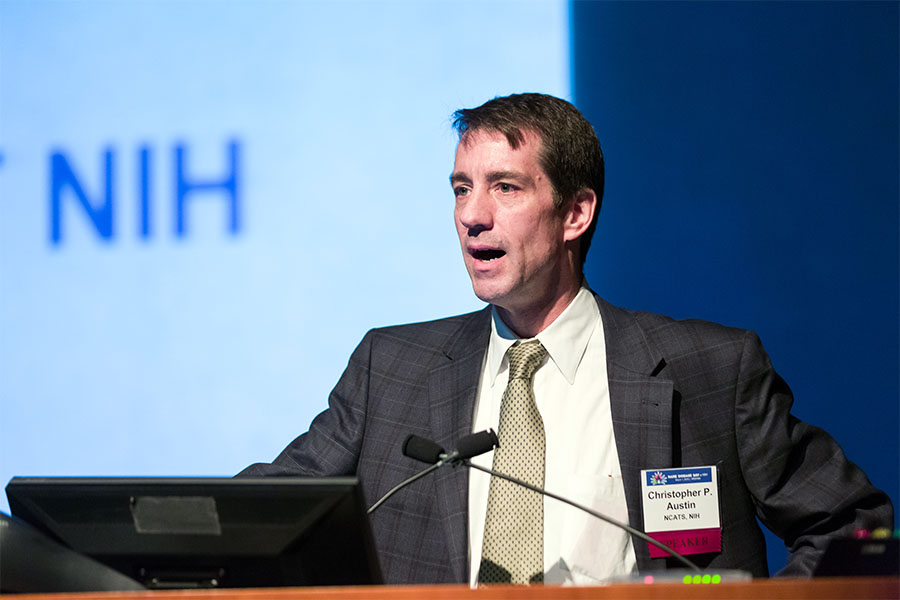
NCATS Director Christopher P. Austin, M.D., welcomed attendees to the annual Rare Disease Day at NIH. Daniel Soñé Photography.
Advances in Gene Editing
The first panel discussion focused on a case study of gene editing, which is a new approach for treating rare diseases, since many of these conditions are caused by a problem with a particular gene. Gene editing, also known as genome editing, aims to change the DNA sequence so that genes may be able to work better and tell the body to make proteins that are more functional.
Although she’d been sick since childhood, Erica Thiel wasn’t diagnosed with the rare disease mucopolysaccharidosis (MPS) until the age of 21. Since then, she has received a weekly six-hour treatment to replace a protein that her body doesn’t make correctly. This therapy costs $24,000 a week.
“Better treatments are needed,” Thiel told the audience. “I hope that these advances and the promise of gene editing can save other families from the many challenges that I have faced.”
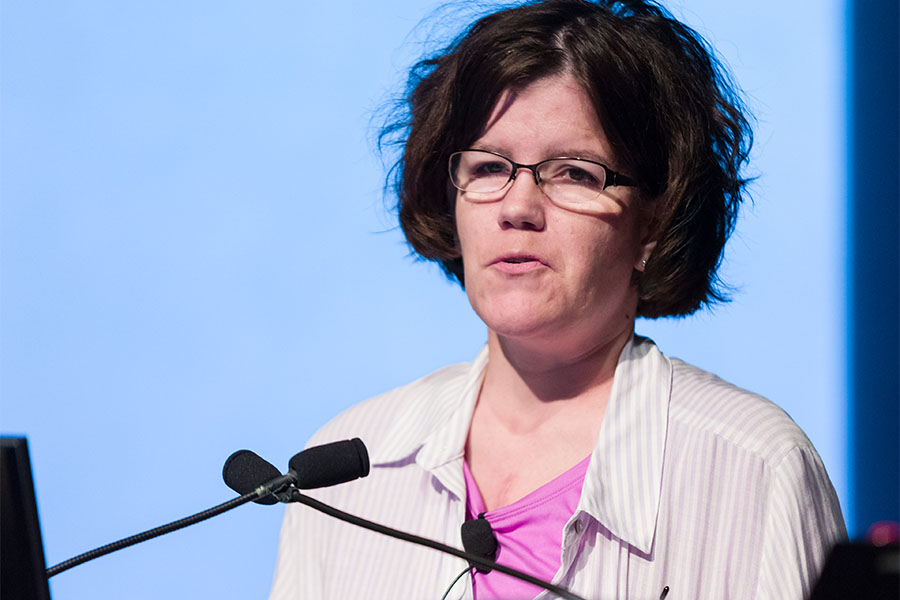
Erica Thiel was diagnosed with a rare disease at age 21. Daniel Soñé Photography.
In disorders like MPS, cells cannot effectively get rid of “waste” (caused by normal cell turnover). Sangamo Therapeutics recently began the first clinical trials in humans of a gene editing product intended to correct this problem in one form of MPS. As of March 1, only two people had received the product.
Sandy Macrae, Ph.D., M.B., Ch.B., president and chief executive officer of Sangamo, said the company will soon begin testing a similar method for treating another form of MPS and a type of hemophilia, a blood-clotting disorder. “If this works, it could become a platform where you can drop in other genes,” he said.
NIH is working to advance the science of gene editing through the Somatic Cell Genome Editing program, a new NIH Common Fund effort led by NCATS. Goals include expanding the number of gene editing tools available to researchers. It is hoped that advances in technologies like the one Sangamo is testing could make it possible to someday use gene editing to treat thousands of genetic diseases.
Getting Involved in Research
A common theme throughout the day was how patients and their caregivers can be involved in research.
“Patients are the best source of information on rare diseases,” said Marshall Summar, M.D., chair of the board of directors for the National Organization for Rare Disorders and director of the Rare Disease Institute at Children’s National Health System, where he is also chief of the Division of Genetics and Metabolism. “Given the genetic variation even within a single disease, each family becomes the world expert on their own version of that disease.”
Summar specializes in a group of rare diseases known as urea cycle disorders. In the 1980s, a child born with a urea cycle disorder had a less than 5 percent chance of surviving to age 5. Now the same child’s chance would be more than 95 percent. This advance came about because patients, caregivers and researchers collaborated to take what they already knew and share it so that everyone could follow the same best practices. “The take-home message is not that it’s nice to collaborate,” Summar said. “It’s key to the survival of patients.”
Providing information to the patient community about research opportunities is one of the most important roles a patient organization can play.
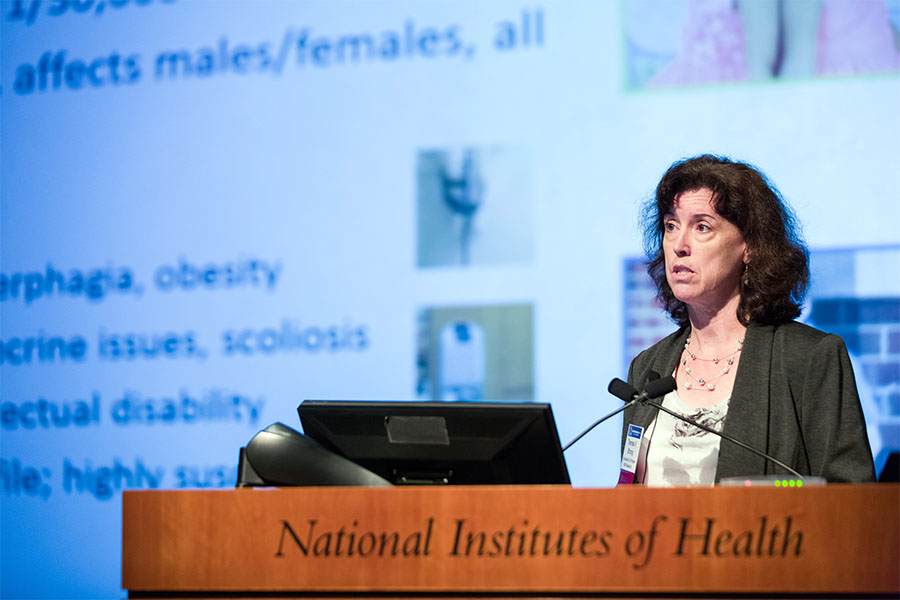
Theresa Strong, Ph.D., co-founded an organization focused on the rare disease Prader-Willi syndrome. Daniel Soñé Photography.
“We can educate our patients about clinical trials, so when the trials come along, they will be ready,” said Theresa Strong, Ph.D., co-founder and director of research programs for the Foundation for Prader-Willi Research. “We also can assist pharmaceutical companies and regulatory agencies in understanding the needs of the patient community.”
For patients and caregivers who are wondering how to get started, NCATS offers resources such as the Toolkit for Patient-Focused Therapy Development. The toolkit is a collection of resources that can help organizations advance research on rare and common diseases, including information on topics ranging from how to start a nonprofit to how to participate in meetings with the FDA.
Challenges of Gene Therapy
For the third panel discussion, participants focused on some of the challenges of treatments that involve fixing or supplying corrected versions of genes.
“For about two decades, people have thought we were on the cusp of gene therapy,” said Peter Marks, M.D., Ph.D., director of the FDA Center for Biologics Evaluation and Research. “I think we are looking, in the next 5 to 10 years, for this to take off in an exponential manner.”
This treatment approach is now a reality; the FDA approved the first gene therapy for an inherited disorder—a rare eye disease—in December 2017.
One of the challenges for developing gene therapies is choosing the right component to measure in clinical trials.
“It’s important to show the person’s cells are making a protein they weren’t making before, but that isn’t the only thing that matters,” Marks said. “The FDA ultimately needs to know whether a treatment is having an effect on how the patient feels, functions or survives.”
This focus on results that are meaningful to patients rings true to Maria Kefalas, Ph.D., co-founder of the Calliope Joy Foundation. She has helped children enroll in clinical trials for a gene therapy for the rare disease metachromatic leukodystrophy. She cautioned that the current experimental treatment, which is quite promising for some patients who are now walking and talking when they wouldn’t normally be able to do so, is not a cure and that it does not work for all. “It’s been very difficult to talk to families about what can happen, because we have these incredible success stories, and then we have kids for whom the treatment isn’t nearly as effective,” she said.
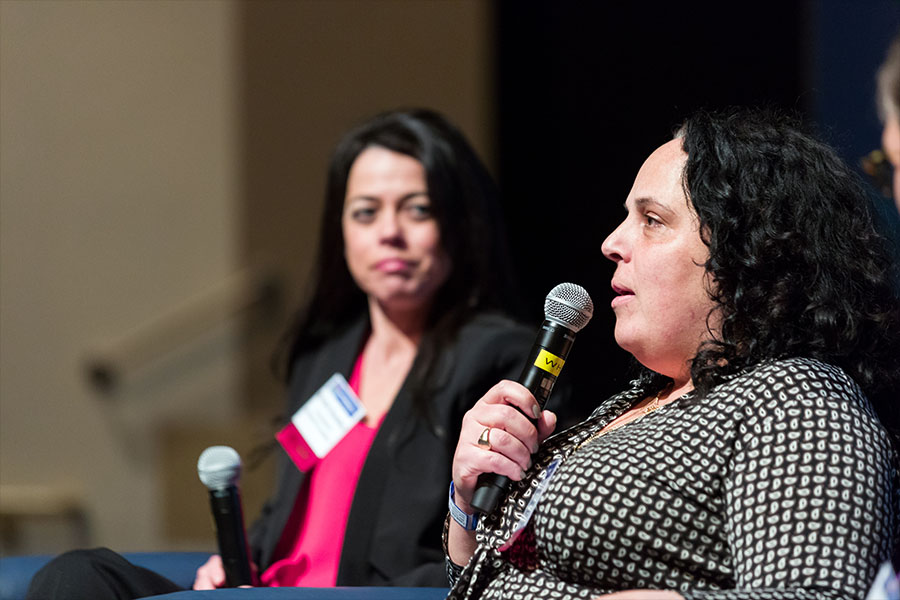
Maria Kefalas, Ph.D. (right), co-founder of the Calliope Joy Foundation, spoke to attendees about helping children access clinical trials. Pictured on the left is Kristin Smedley, president of the Curing Retinal Blindness Foundation. Daniel Soñé Photography.
These challenges are top of mind for NCATS scientists who have supported gene therapy projects for rare diseases, including one for Pompe disease, a muscle disorder, and another for aromatic L-amino acid decarboxylase (AADC) deficiency, a pediatric condition that causes developmental delays. While these scientific advances offer hope for new treatments, more work lies ahead to meet the needs of all rare disease patients who could benefit from gene therapy.
Living with Rare Diseases
The final panel of the day featured young adults sharing their experiences about living with a rare disease or the risk of developing one.
For example, it can be frustrating to not be taken seriously by clinicians. Taj Neaz Powell has often found himself in the emergency room in acute pain as a complication of sickle cell disease. His arms are scarred from the many blood transfusions and intravenous medications required to treat the disease.
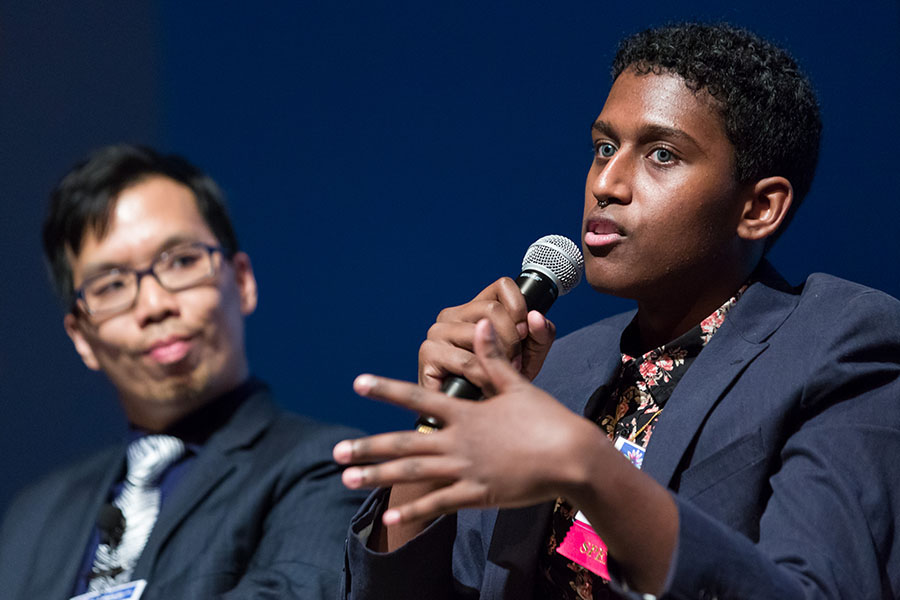
Taj Neaz Powell (right), a patient at The Children’s Inn at NIH, talked about the challenges of living with sickle cell anemia. Pictured on the left is Eric Sid, M.D., M.H.A., of NCATS’ Office of Rare Diseases Research. Daniel Soñé Photography.
“The doctors would take one look at my arms and say, ‘Oh, he’s a drug addict,’” Powell said. “Unless my doctor called or my parents would come in, sometimes they wouldn’t give me the benefit of the doubt.”
Maddie Shaw, founder of Maddie’s Herd, reported similar experiences while trying to get a diagnosis. “I was told multiple times that I was being overdramatic or sensationalizing things as a tween girl looking for some excitement in her life,” she said.
Shira Strongin, founder of Sick Chicks, is still undiagnosed and often finds it frustrating that clinicians address her mother instead of her. “Our voices are valid and should be listened to as experts in our own body and for our own health,” she said. “Be your own expert, your own best advocate.”
Taylor Kane, founder of Young ALD (Adrenoleukodystrophy) Carriers as well as Remember the Girls, carries the gene that caused her father’s fatal illness and is likely to eventually develop symptoms herself. She emphasized that there is power in working with other people living with rare diseases, underscoring the overall purpose of Rare Disease Day: “Rare is rare, but rare is powerful when we come together.”
Strength in Numbers
Austin underscored the message of “power in numbers” in his closing remarks, emphasizing the hope and scientific advancements that come from sharing resources and data from different diseases to create more knowledge and connections. “Consortia in the Rare Diseases Clinical Research Network work together to understand and treat related diseases,” he said, adding that NCATS and its NIH partners are completely committed to doing whatever is possible to speed up progress. “If we stick together as a community, as is happening now, the future is very bright indeed.”
Posted April 2018


